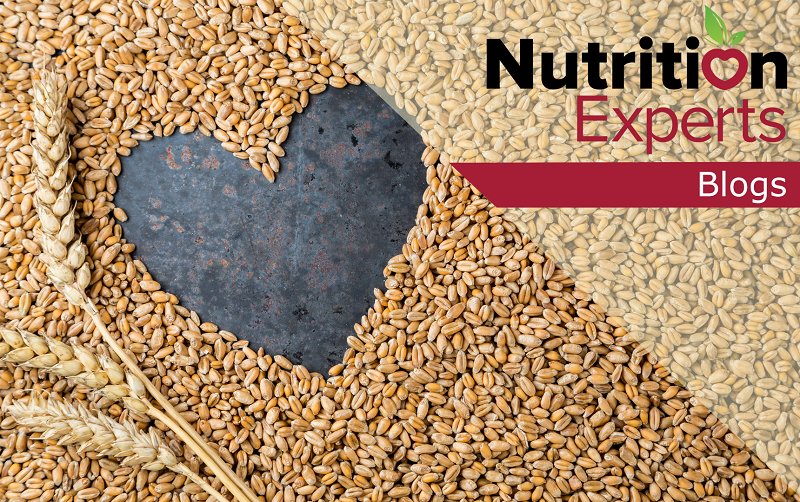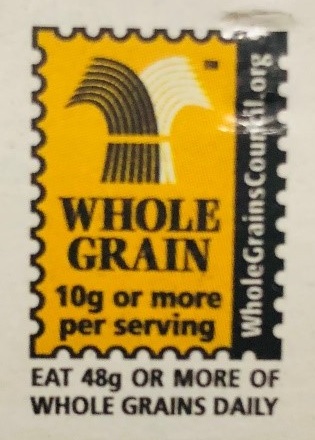
Image: Inha Makeyeva/Shutterstock
By: Sonia Ramirez-Rivera, BS, CSUN Dietetic Intern
As everyone has heard that famous saying, “An apple a day keeps the doctor away,” this can truly be said for consuming whole grains. Whole grains are very important to include in your daily life. If you were to go to the store, would you be able to point out a whole grain? As easy as that may sound, not many people know what whole grains are, how to identify them, and the health benefits they provide.
What are Whole Grains?
Whole grains are cereal grains that consist of the intact, ground, cracked, or flaked kernel, which includes the bran, the germ, and the inner most part of the kernel (the endosperm.)1 Some different types of whole grains and whole grain flours are2:
Amaranth
Barley
Buckwheat
Corn
Millet
Oats
Quinoa
Brown Rice, Red Rice, Black Rice
Rye
Sorghum (also called milo)
Teff
Triticale
Wheat and wheatberries
Some of them are common foods that we already use, but not many know of the different variety that is available. The beauty of whole grains is that you can do many things with them. From whole wheat pasta dish, to overnight oats with fruit for your breakfast the next day, whole grains offer a variety of options that can be included into your daily diet.
How to Identify Whole Grains
The Whole Grain Council created the whole grain stamp packaging symbol for products that contain at least 8 g of whole grains per serving or more.3 Look out for this logo on items in your local grocery store.

Image: Sonia Ramirez-Rivera
USDA’s 2015-2020 Dietary Guidelines for Americans suggest switching from refined grains to whole-grain foods.4 To increase your whole grain intake, try simple swaps like switching from white bread to 100% whole wheat breads and switching from white rice to brown rice.4 These changes would increase your whole grain intake to help meet recommendations.4
Benefits to Eating Whole Grains
Whole grains provide many health benefits, including plenty of fiber. “Whole grains are well recognized as an important source of dietary fiber. The US Institute of Medicine (IOM) of the National Academies defines dietary fiber as those food components that are indigestible by human enzymes.”1 Fiber is a macronutrient that we all need. Consuming whole grains, just as much as fruits and vegetables, will help provide the necessary fiber needed. According to the Whole Grains Council and US Dietary Guidelines, everyone age 9 and up, should be eating 3 to 5 servings or more of whole grains every day.5 For cooking inspiration, check out the THE A-Z GUIDE TO COOKING WITH WHOLE GRAINS provided by the Whole Grains Council.
Whole grains are also considered to reduce the prevalence and risk of common disease states, such as type 2 diabetes (T2D), coronary heart disease (CHD), and hypertension, which can generate huge health costs.1
The Marilyn Magaram Center brings healthy whole grain recipes to life. Try this recipe for Quinoa Stuffed Tomatoes!
Be proactive in your health. There isn’t much talk of whole grains. Just as much as we hear about fruits and vegetables, protein or even carbohydrates, whole grains and dietary fiber are equally important. The Whole Grains Council looks for ways to empower the world, one whole grain at a time. The wholegrainscouncil.org website is an excellent source of easy recipes, advocacy, and it provides plenty of valuable information on whole grains. See their recipe for Quinoa Tabbouleh below!
Quinoa Tabbouleh
Author: Whole Grains Council
Serves: 8
Ingredients
- 2 cups cooked quinoa
- Juice of 1 lemon
- 1-2 garlic cloves, minced
- 1 tablespoons extra-virgin olive oil (optional)
- 1 can rinsed, drained canned chickpeas or other canned beans (optional)
- 1 cup fresh chopped parsley
- ¼ cup chopped mint
- ¼ cup chopped basil
- 1 cup diced tomatoes
- Salt and freshly ground pepper to taste
Instructions
1. Combine the cooked quinoa, lemon juice, and garlic and chill for 30 minutes.
2. Add the remaining ingredients and season with salt and pepper.
References
1. Lillioja S, Neal AL, Tapsell L, Jacobs DR. Whole Grains, Type 2 Diabetes, Coronary Heart Disease, and Hypertension: Links to the Aleurone preferred over Indigestible Fiber. BioFactors (Oxford, England). 2013;39(3):242-258. doi:10.1002/biof.1077.
2. Definition of a Whole Grain. Definition of a Whole Grain | The Whole Grains Council. https://wholegrainscouncil.org/definition-whole-grain. Accessed September 20, 2018.
3. Mozaffarian RS, Lee RM, Kennedy MA, Ludwig DS, Mozaffarian D, Gortmaker SL. Identifying whole grain foods: a comparison of different approaches for selecting more healthful whole grain products. Public health nutrition. 2013;16(12):2255-2264. doi:10.1017/S1368980012005447.
4. Chapter 2 Shifts Needed to Align with Healthy Eating Patterns. A Closer Look at Current Intakes and Recommended Shifts- 2015-2020 Dietary Guidelines https://health.gov/dietaryguidelines/2015/guidelines/chapter-2/a-closer-look-at-current- intakes-and-recommended-shifts/#figure-2-5. Accessed November 4, 2018
5. U.S Dietary Guidelines and WG. U.S. Dietary Guidelines and WG| The Whole Grains Council. https://wholegrainscouncil.org/whole-grains-101/how-much-enough/us-dietary-guidelines-and-wg. Accessed November 4, 2018

Pingback: Heart Health for Life | Magaram Center Nutrition Experts Blog